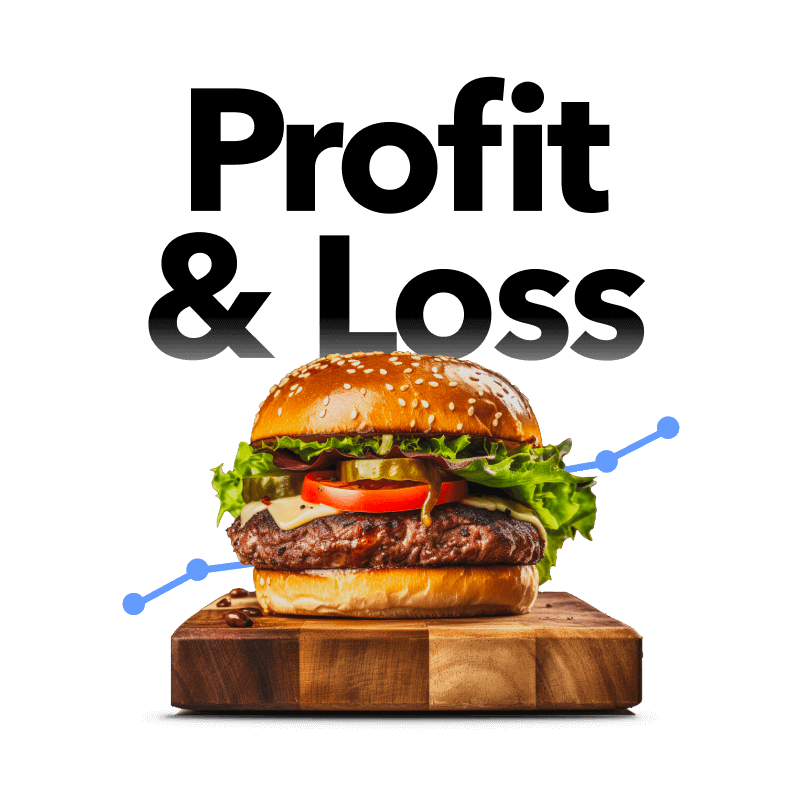
Ok, so in a previous post we took you through a clear, actionable process for analysing and improving your food margins for better profit. This is a follow-on post from that, where we’ll shift from taking our calculated margins into the real world, focusing now on our actual margins.
If you haven’t read that first post, hop over and take yourself through it then we’ll see you back here. If you’re up to speed…let’s go get you even more profit.
Tracking your actual margins
We all know the drill - you or your team carefully built and reviewed your new menu to deliver a 30% COGS, but when you finally released it to the world your customers loved it but your cost of goods came in way higher than planned.
The good news is that there are only three possible reasons this can be happening, and we’ve got a plan for you to monitor all three.
Buy Price - You’re not buying your stock items at the same price as what you costed your recipes and menu at.
Sell Price- The average price you're selling menu items for is less than what you initially planned your menu at. This is usually due to discounting, which often isn’t factored in.
Shrinkage or Wastage - You’re using more stock to make your recipes and plated menu items than you originally calculated.
Let’s hit a process for looking closely at these, one by one.
Buy Price
Let’s start with the prices you’re buying your stock items for. Remember, if you haven't read the first part of this series, go back and do that first. Everything below picks up from where that left off.
Let’s go back to the Eggs Benny recipe we had dialled up the margins on:
When you originally costed your Eggs Benedict recipe, you based your stock cost on the prices you were currently buying these at from suppliers (or had agreed to pay moving forward).
However, several weeks later one of your suppliers hasn’t applied the agreed pricing to your muffins (you don’t have a system to check this, so hadn’t noticed), and another supplier increased their egg pricing but their billing system didn’t hold the discount for you that it should have (happens all the time due to the huge number of customers, stock items, and pricing levels that suppliers have to manage). So what happens?
Well, your recipe pricing has increased from $6.55 to $7.19. That 9% jump on your underlying recipe cost means you're never going to hit your original COGS target for your Eggs Benedict. Even worse, because it’s a popular dish and you sell 75 of them a week, it’s costing you about $2,500 a year just because you're not paying the price you agreed with suppliers on these two items.
Sell Price
Ok, next up we’ve got the sell price. This sounds pretty simple, right? Make sure you’re selling your menu items for the price you originally planned to. But the piece that’s often overlooked here is discounting.
Discounting comes in many shapes and sizes, from loyalty programme discounts to nightly specials to discounts that your team or shareholders get on the meals they eat while they’re at work.
The first pro-tip here is to make sure absolutely everything that goes out of your kitchen and gets eaten by someone is rung through the POS. Even if it’s going out for free, you should be able to ring it off as a 100% discount so you have full trackability of how this is affecting your margins.
Let’s look at our COGS before we do any discounting, where we see we should be getting a 27.2% COGS on our Eggs Benny.
But our eggs benedict is available for our staff to buy at 30% off the menu price, and on a Monday morning we do an Eggs Benedict & Coffee deal for $25. Combined, this means there’s regular discounting happening on this dish.
Let’s look at the impact this is having on the real average price we’re selling this item for.
We’ve had $273 in discounts on our Eggs Benedict, dropping our calculated sale price down from $24 to $20.31.
Right. Now we better check what that’s doing to our margins.
Oh no. In this example, discounting alone is increasing our COGS from 27.2% to 32.2%.
The solution isn’t just to stop offering discounts, because overall these might actually be driving revenue and profitability for your business. But you should be armed with all this information so you can make clear decisions on whether the margin impact discounts are having is a worthwhile tradeoff for the revenue it’s bringing the business.
(Loaded tracks discounts against every item you sell in your POS, making it super easy to see the impact discounting has on your margins)
Shrinkage and Wastage
The third biggest area margins can go south is through shrinkage and wastage. In simple terms, this just means you’re using more stock than you expected to when you planned out your recipe.
The biggest mistake people make when they start trying to figure out their shrinkage and wastage is to start counting absolutely every food and beverage item in their business. This is important, but if you’re not already stocktaking then your biggest opportunity is to focus only on the stock items that are costing you the most and have the highest risk of being over portioned or wasted.
In our Eggs Benedict, the salmon at $27.76 a kilo (expensive) and being perishable in nature (prone to waste) is the clear stock item we need to focus on.
This is what happened when we tracked our salmon by doing a two minute stocktake at both the start and end of each week.
We had 6.75 kilos of salmon at the start of the week, and we purchased 10 kilos throughout the week. When we counted the salmon again at the end of the week we had 4 kilos. This meant we actually used or went through 12.75 kilos of salmon. But, wait…last week we sold 74 Eggs Benedict, and there’s meant to be 125 grams of salmon in each dish, so we should have only used 9.25kg. Where’d that other 3.5kg go?
And more importantly - how much has that cost us!?
Brace yourself. We’ve lost $97.16, or over $5,000 per year. From one stock item. Used in one dish.
Once you have this information at hand (and you’ve calmed down again), there are three clear things you need to do to resolve it:
- Clearly communicate what you’ve discovered with your kitchen team to put a spotlight on the issue. Be clear that it’s a big issue, and needs to be fixed.
- Start doing a daily stocktake on the item (remember, it’s just one item so will only take a few minutes). This will help show if it’s a constant issue, or whether it only happens when a certain chef is working, or on a certain day when you’re perhaps over-ordering and being forced to throw out product you can no longer sell.
- Consider whether your recipe is actually accurate. It’s quite possible that the portion size you have in your recipe isn’t adequate for how the dish needs to be plated to make sure customers love it! If so, you’ll need to update your recipe and consider the price you’re selling this to customers for.
My experience is that by (initially) simplifying stocktaking down to just the key items in your business, and focusing hard on actually resolving any shrinkage or wastage, your team won’t feel overwhelmed and you’ll be able to make 80% of the margin gains that are available to you.
(if you use Loaded, you have access to the most flexible stocktaking around - you can literally just stocktake one item if you want to)
Before we wrap, let’s recap this important point: there are only three ways your actual margins can be different to what you initially calculated.
You’re buying at different prices than what you expected to, you’re selling at a lower average price than you expected to (most often because of discounting), or you’re using more stock than you should be per plated dish.
Fix your current dishes, then keep a relentless focus on these three things any time you release a new menu or new items on a menu. This will almost certainly improve your margins quite significantly right now, and protect you from bad surprises down the track.
As always, we’re here to help - if there’s anything in here you’d like help with, reach out any time. And if you’ve never seen Loaded in action, jump over and book a demo with us. 30 minutes is all we’ll need to show you the magic!
The Best (and Free) Profit and Loss Template for Hospo Groups
This free guide to Financial Management is based on proven formulas and insight that can help drive results in your business.


More Profit
Making money doesn’t happen by accident! Learn how to tune your business and improve your bottom-line.

More Success Stories
Get inspired by stories from real Loaded customers who run thriving hospitality businesses.

More Labour
Get tips for optimising your staff’s time, and for managing your team effectively.

More Culture
Making money doesn’t happen by accident! Learn how to tune your business and improve your bottom-line.

More Design
Making money doesn’t happen by accident! Learn how to tune your business and improve your bottom-line.

More Design
Making money doesn’t happen by accident! Learn how to tune your business and improve your bottom-line.
The Best (and Free) Profit and Loss Template for Hospo Groups
This free guide to Financial Management is based on proven formulas and insight that can help drive results in your business.

See how Loaded can work for your business
If you’ve never seen Loaded in action, jump over and book a demo with us. 30 minutes is all we’ll need to show you the magic!


More Design
Making money doesn’t happen by accident! Learn how to tune your business and improve your bottom-line.
Learn from the best
Find articles, videos, E-books and more all delivered by our qualified, world-class community of expert hospitality operators: take a look
Season 2: Spring Bootcamp for a Money-Making Summer
We've poured our 100+ combined years of hospitality experience into a series of live and recorded webinars that will be your bootcamp for a money-making summer.








.jpg)














